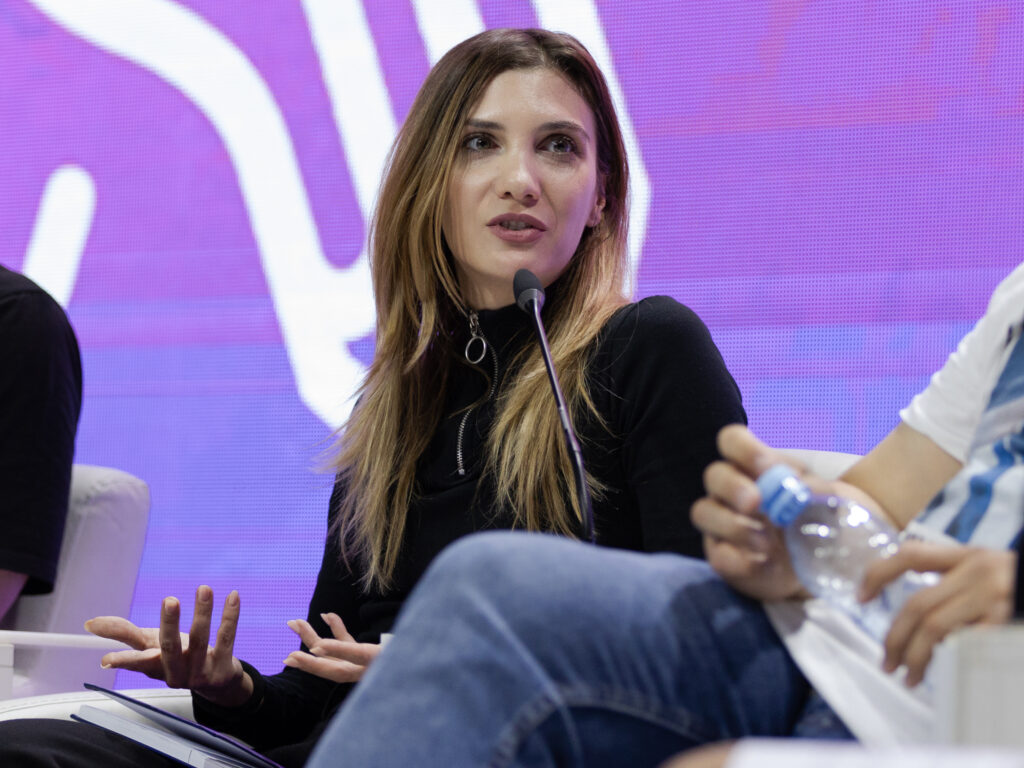Sanja Lazić works with media organizations and non-profit organizations in the Western Balkans and helps them with crowdfunding and community building. She was part of the Catalyst Balkans team and in charge of the first Serbian crowdfunding platform Donacije.rs. Within the last three years, she created and implemented numerous fundraising campaigns with media outlets from Serbia, North Macedonia, Bosnia and Herzegovina and Albania. We talked to her about how the media in the Western Balkans can use crowdfunding to expand their capacities.

Author: Teodora Đurnić / Photo: Vanja Čerimagić
How can crowdfunding help the media? What are its advantages?
Crowdfunding can help the media or any organization in several ways. One of the most significant benefits of crowdfunding, more than raising money (which is the most obvious one), is testing your targeted audiences, testing your idea, and serving more as a marketing tool than anything else. It can be a great test for media organizations to feel the pulse on something new they are trying to introduce in their work, but it also helps them stay in contact with audiences and have better interaction which can then lead to many other benefits as well.
How it works, and how the platform Donacija.rs was founded?
Crowdfunding is the way for people to donate or pay for something online. So, you have one external platform where you go and find a crowdfunding campaign that you connect to, that speaks to you, you click on the amount of money you want to donate, and that’s basically the concept of it. So, in the Western Balkans, we don’t have a lot of crowdfunding platforms. What people are most familiar with are Indiegogo and Kickstarter, the most famous ones. But in the Western Balkans, in Serbia, we have Donacija.rs which is the first crowdfunding platform of that type there, and it’s mostly focused on young non-profit organizations. So, any NGO can launch a campaign.
How many media in Serbia are financed through crowdfunding?
I think it’s difficult to tell the exact number, but not a lot. My job while I was in Catalyst Balkans and Donacija.rs’ team was working with local media outlets from Serbia, for example, Forum Prijepolje is a small local media outlet from Prijepolje that had the first crowdfunding campaign in Serbia for media outlets. So, they were the first ones to set the ground for it, but in terms of different types of online fundraising, there are other media doing it, some very successfully. Today at the panel, I mentioned KRIK, which is doing amazing work with that. But I think more important for people to know is that it takes a lot of time, a lot of preparation, and it’s hard work, so those who want to start need to know that it’s not a one-time thing and it takes a lot of work and preparation. And those who want to implement some more complex fundraising models, it requires you to lead a campaign and ask people to donate to them all the time. So it’s not easy work, but I think the benefits are multiple.
Is crowdfunding becoming popular in the region?
It’s still in its beginnings, but I think more and more people will start to understand its benefits. However, it is also important to say that crowdfunding at any time is not a solution, and it’s not the one business model that one organization can take. It can be an added thing for one organization and its business model. It is something that people consider because it requires people to give you support, and people are the most important resource to have. So, if they don’t give you support for what you do and what you are focused on, then you should really think through everything you are doing. So I hope that kind of community fundraising will only start developing.
Since the topic of the panel you took part in was “Reaching for audiences in an oversaturated media environment”, what is your advice to the media when it comes to reaching an audience?
I think it’s a complex issue and a complex question that I don’t think I can answer in one simple or short answer. But I think that the most important thing, I also mentioned on the panel, is to know who we are talking to. I think that many media organizations tend to forget that or have a different idea of who their audiences are, or because they are overwhelmed with work and many people do numerous things, they forget to deal with it. And when you forget who you are talking to, then you forget how to create the content that they will respond to. Then another thing, maybe even more important, is to have quality, immersive, engaging content that speaks to that audience. And to connect with them, interact with them, and have a clear idea of their feedback, but not compromise your mission and vision solely by their feedback. So, I think those were kind of basic steps.